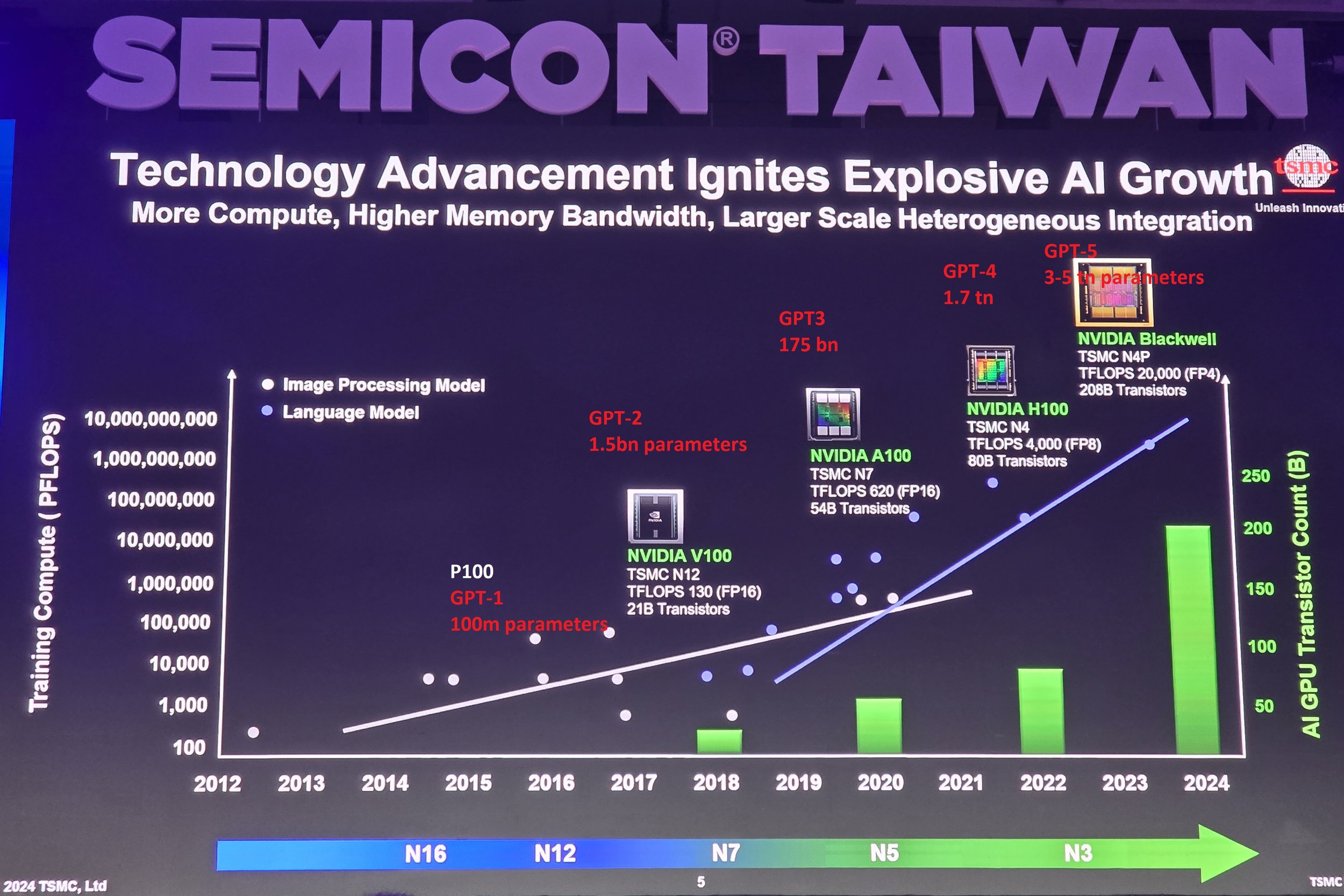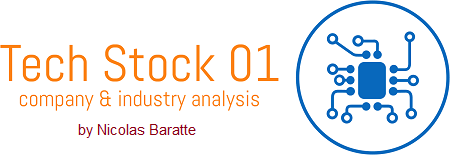
Smartphone growth is slowing down in 3Q24. Mediatek. Qualcomm
Smartphone growth is slowing down to +4% YoY in 3Q24. MTK and QCOM see increasing ASP with AI
Smartphone Growth Is Slowing Down to +4% YoY in 3Q24. Mediatek had a good rally, time to take a break
Smartphone growth is slowing down but ASP are increasing for Mediatek with 5G AI-enabled phones. Mediatek has other drivers, AI chips and Auto GPU. The stock is up 33% YTD and is expensive.

How Big Is the AI Accelerator Market? AMD, Broadcom, Nvidia, SK Hynix, TSMC
AMD estimates AI Accelerators will reach US$500bn by 2028 ($45bn in 2023). Accelerators increased by 150% in 2024, reaching US$113bn. Based on TSMC CoWoS, we expect 115% growth over 2025-26, $276bn in 2026.
TSMC makes all the chips. HBM is dominated by Hynix, Micron in 2nd place. Nvidia should remain the dominant vendor for years. AMD and Broadcom should grow faster than NVDA. Outsourcing: Alchip, Marvel, Mediatek.

3Q24 PC Shipments Are Flat YoY. Lenovo, Acer, Asus. Compal, Quanta, Wistron
IDC reported 3Q24 PC shipments declining -2% YoY, Canalys an increase of +1%. Let’s call this flat. If 4Q24 is “average seasonal”, 2024 will reach ~265m, or the pre-Covid range.
No AI fever, no accelerated replacement cycle, for now. If it happens, it will take time, ie compelling AI apps that only run locally and need a new PC.
In Asia, PC vendors: Lenovo, Acer, Asus. Taiwan ODM: Compal, Quanta, Wistron. Semi with high exposure: Novatek, Realtek.

TSMC, UMC Monthly Sales: TSMC up Strong but Plateauing, UMC Lackluster, Confirming 2 Big Trends
AI demand will remain strong but is plateauing in terms of YoY growth. The rest of end-demand remains weak (Consumer, PC, Auto, Industrials). TSMC and UMC monthly sales confirm this.
TSMC high growth plateau ~40% YoY: AI (Nvidia Broadcom, AMD), Intel, new smartphone chips. Comps will get harder early 2025. Valuations are high but not extreme: limited upside and downside.
UMC lackluster at ~6% YoY growth, reflecting lackluster end-markets from smartphone, Consumer Elec, PC, Auto & Industrials. Average valuations; in need of an elusive catalyst.

All Is Not Well in Tech Sector, AI Growth Slows, TSMC Expensive. Samsung, SK Hynix More Attractive
The rally of the Asia Tech sector (+24% YTD) is highly concentrated in a handful of stocks. TSMC is up 64% but Samsung is down -22% YTD.
With the exception of AI, end-demand isn’t great.
End-demand in the Consumer and Enterprise segments is flattish; related stocks have underperformed. We see little reason to expect significant growth in 2025.
Important turnarounds in 2025 will be Industrial electronics back to growth in 1H25, Auto electronics bottoming out mid-25.
Smartphone up 8% but below 2019-21 level. PC flattish. x86 Server flattish. Telecom capex declining. Automotive electronics declining.
AI is the most disruptive trend since Cloud in 2010. Years of increasing Capex are in front of us. But short-term, stocks are properly valued to rich, growth is slowing.
AI is the only growth driver but growth is slowing; related stocks have outperformed but are often expensive. We expect AI related Capex to increase in years ahead, but stocks probably need a consolidation period.
Korean Memory looks attractive, both on valuations and low expectations, despite short-term concerns such as high inventory for PC DRAM.

SEMICON Taiwan 2024: no roadblocks down to A10 in 2029
The Semi industry has qualified its roadmap down to A10 in 2029. The Technologies work in the Lab and can be industrialized. This is the Nanosheet or GAA generation.
From 3nm (2024) to A14 (2027), wafer and packaging costs will probably double. This implies that the addressable market will only be High Perf Computing / AI. Smartphones, iPhone included, don’t need the performance and can’t justify the cost.
The roadmap of the Semi industry to 2029 is geared to AI Compute. The Semi industry from chemicals, equipment makers to foundry and chip designers are clear about this: future revenue growth will come overwhelmingly from the AI segment. The Semi industry is not trying to pack more transistors in the same form-factor. It is aiming to make chips as systems, as large as possible. The new KPI is more FLOPS per Watt. Cost is a more distant concern.
The following generation post-2029 will adopt a different transistor structure, CFET which will require new lithography and new materials.

NVDA post-market reaction (-7%) highlights the valuation problem. The correction of the tech sector should resume
NVDA 2Q beat consensus, 3Q guidance beat consensus, the stock declined post-market.
Overall, growth in Tech is mediocre (PC, smartphone, enterprise, telcos), with growth concentrated in AI Semis and Hyperscalers
The Tech segment of the NASDAQ 100 is expensive, Non-Tech is not.
